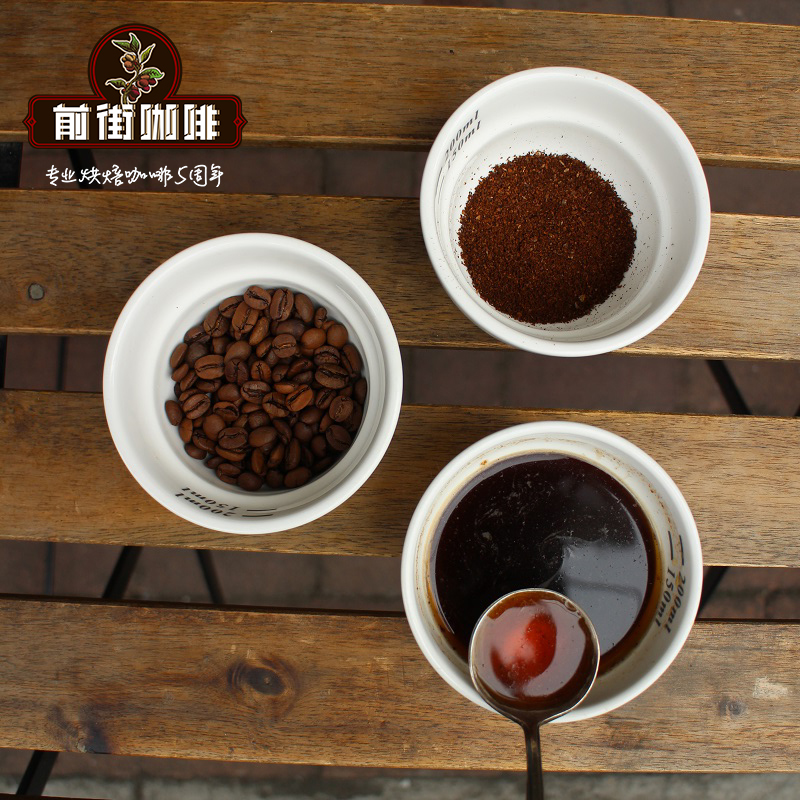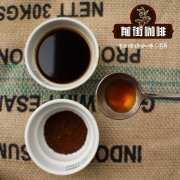What are the skills of making cloth powder in espresso? What are the steps? How much is the gouache ratio?

Professional coffee knowledge exchange More coffee bean information Please pay attention to coffee workshop (Weixin Official Accounts cafe_style)
Italian coffee making cloth powder skills? What are the steps? What's the gouache ratio?
In the production of Italian coffee, there is a very important but easily overlooked small detail, that is, cloth powder. What seems to take only a few seconds, don't just think of it as an episode, it is also an important part of the Italian coffee concerto!
The purpose of powder distribution is to make the powder layer evenly distributed, so that it can be extracted evenly. If this step is not done well, some coffee powder displays its enchanting flavor, while the other part can only bury talent and grace, which is unfair!
As a barista, what can I do to make these coffee powders gathered in the powder bowl just release their wonderful flavor?
We can generally choose the following three ways:
Number one: with your hands.
It is difficult to count the methods of powder distribution, as long as it is clean and hygienic, and can achieve the goal of evenly distributing coffee powder, what will do. Whether you want to apply powder with your fingers or palms, whether you rotate your fingers, scrape flat, or even have a unique technique, you can, but be careful not to apply downward pressure to the powder. The strength of the hand is uneven, which will make part of the powder relatively more dense, then contrary to our original intention.
And we all know how lazy water is. When extracting coffee, it always prefers to drill into places with large gaps, and those dense places, it will choose to penetrate slowly or detour. Therefore, we should try our best to distribute the gaps evenly and not give water the opportunity to be lazy!
Hand spread powder
Second: Use powder spreader
After connecting the powder, if a small hill is formed in the powder layer, we can first gently stir it with our hands so that the powder does not gather in one place, and then use the powder spreader to flatten it. However, the following two points need to be noted:
The height of the general powder dispenser can be adjusted. Before powder distribution, we should judge the appropriate height according to the amount of powder. If the powder dispenser is remote from the surface of the powder, it can only touch the convex part and neglect the concave part. If the distance is too close, it will press the powder layer, such pressure may not be uniform, the powder layer will also be uncomfortable! They want just the right intimacy!
Secondly, since the powder dispenser has a certain weight, we need to keep the powder bowl and the powder dispenser in a horizontal state when distributing powder, and then they can fit perfectly! Otherwise, once inclined, the powder layer will also be subjected to uneven pressure (pressure on the same ah!)
Third:
Since there are the above two methods, then you can also combine them-first spread the powder by hand, then use the powder spreader. This method is safer than the first two. But whichever one you choose, it's all the same: for uniform extraction.
At present, there are many kinds of auxiliary tools on the market, each with its advantages and disadvantages. If you think it's right for you, buy one and try it.
How do you make good powder?
Uniform-In other words, let coffee powder particles evenly distributed, neither let fat people gather together, and thin people tie a pile (uniform thickness), nor let them crowded on one side, but the other corner can practice air flip (uniform density). It's not just about making the surface of the powder look flat!
Therefore, it is not recommended to have some actions such as knocking the handle or shaking. If the control is not good, cracks or small pits will easily appear, and even fine powder will sink. Even if the powder is pressed well, it cannot make up for this internal injury.
Important Notice :
前街咖啡 FrontStreet Coffee has moved to new addredd:
FrontStreet Coffee Address: 315,Donghua East Road,GuangZhou
Tel:020 38364473
- Prev

Introduction to Arabica Coffee beans and their varieties which species does Catimor belong to?
Professional coffee knowledge exchange more coffee bean information please follow the coffee workshop (Wechat official account cafe_style) is currently the three largest coffee varieties on the market, many of the most commercially valuable boutique coffee beans are Arabica species in the repeated breeding and variety improvement extended many varieties designed to improve disease resistance, yield, environmental adaptability, but if the use of native species
- Next

Which brand of iron pickup coffee beans is good? Tibica coffee beans how to pronounce Typica in English?
Professional coffee knowledge exchange more information on coffee beans Please follow the coffee workshop (Wechat official account cafe_style) Coffee has at least 500 genera of Rubiaceae, which is an evergreen shrub. There are dozens of varieties in the genus Coffee; but most of them have no economic value, only three species have economic value, but these three varieties are Allah.
Related
- Detailed explanation of Jadeite planting Land in Panamanian Jadeite Manor introduction to the grading system of Jadeite competitive bidding, Red bid, Green bid and Rose Summer
- Story of Coffee planting in Brenka region of Costa Rica Stonehenge Manor anaerobic heavy honey treatment of flavor mouth
- What's on the barrel of Blue Mountain Coffee beans?
- Can American coffee also pull flowers? How to use hot American style to pull out a good-looking pattern?
- Can you make a cold extract with coffee beans? What is the right proportion for cold-extracted coffee formula?
- Indonesian PWN Gold Mandrine Coffee Origin Features Flavor How to Chong? Mandolin coffee is American.
- A brief introduction to the flavor characteristics of Brazilian yellow bourbon coffee beans
- What is the effect of different water quality on the flavor of cold-extracted coffee? What kind of water is best for brewing coffee?
- Why do you think of Rose Summer whenever you mention Panamanian coffee?
- Introduction to the characteristics of authentic blue mountain coffee bean producing areas? What is the CIB Coffee Authority in Jamaica?

